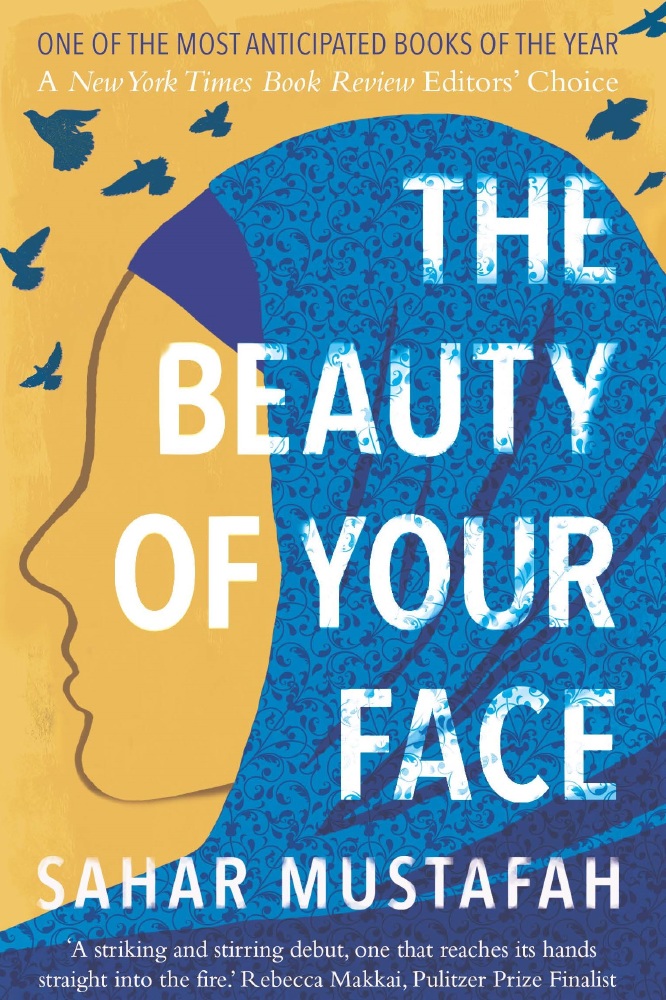Last spring, I’d welcomed the prospect of extra days and hours to work on my current novel. I could balance a swiftly assembled virtual teaching schedule and have more than enough time for my writing. It would be a wonderful break from the daily grind. As a home recluse, I looked forward to even more time writing and reading away in my loft.

The Beauty of Your Face
By the end of April, all I had was time. I felt myself slowly engulfed by it. A chasm had split open my schedule of routines and obligations, threatening to swallow me whole. Any semblance of normal life was snipped like thread from a spool.
Time loomed and my hands were becoming feeble. They were incapable of much beyond simple cooking and cleaning, washing and dressing myself. It was hard to stay focused on my computer screen or even read the printed page of books I’d been stockpiling.
And then I rediscovered tatreez.
Tatreez is a traditional Palestinian embroidery, marked by its cross-stitch style that has gilded the thobe—a folk caftan worn by women—for centuries. Tatreez extends its artistry across textiles and continues to evolve in contemporary renditions. Generations of Palestinian women have reclaimed this intricate craft including Wafa Ghnaim, whose platform Tatreez & Tea, captured my imagination weeks into the pandemic. Ghnaim recently described the experience of tatreez as “...at once an artistic practice, a mode of storytelling, a form of political claim-making, and a manifestation of the liveliness, dynamism, and reliance of Palestinian culture in the face of settler-colonial erasure.”
For me, a simple beginner’s panel of embroidery—“The Tree of Life”—pulled me from my mental state of inertia. My fingers were vigorously working again, my attention laser beam-focused as I followed a pattern, designed an original color palette, and finally made it into a bookmark for gifting. I’d worked with tatreez in my younger years when I lived in Palestine; when my family and I returned to the States, teenage distractions quickly replaced it. Later on, my writing would be my only craft. I’d become completely immersed in my short stories and essays, subconsciously limiting myself to one art form.
Tatreez broke the silence of the pandemic. My needle deftly moved in neat rows and columns. Tatreez offered me a new creative outlet as well as a deeper look at my ancestral history. I pondered the women who’d constructed panels representing lost and surviving Palestinian villages, what those spaces were like when the women gathered to embroider in peace and in exile, temporarily tucking their pain and loss away. I considered a pattern from my late mother’s native town of Hebron titled “Beyout”—Houses. A single cross-stitch links a series of six structures, embodying unity and community. Like a short story, a pattern of tatreez unravels a moment, a scene about a people who continue to persevere—people I’ve been writing about for the last two decades in my fiction.
For all it took away, the pandemic returned me to the delicate and engaging beauty of tatreez. And even more importantly, it revealed how the human brain and spirit can thrive from many art forms and creative experiences. When I am fatigued from writing, I can transition to tatreez and it frees my mind. It sustained hope and cultural pride among my ancestors, and today it propels me forward during dire and uncertain times.
The Beauty of Your Face by Sahar Mustafah (£8.99, Legend Press) is out in paperback now.

